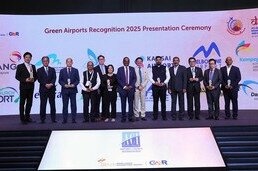
Brisbane’s New Runway Inaugurated with Vintage Aircraft Sky Show
- 12 Jul 2020
Virgin Australia, BNE’s home carrier, had the honour of the first historic departure, flying to Cairns in celebration of Brisbane’s deep connection with the regions and Queensland’s tourism industry. Following an official ribbon cutting on the runway, invited VIP guests gathered airside with 150 Brisbane Airport Corporation staff and 10 local plane spotters, who won a place at the event in a lucky draw, to watch the first aircraft movements and sky show.
In a first for an Australian capital city airport, the air space above BNE was briefly closed to allow the aerobatics display by ‘Fighter Pilot Adventure Flights’, a Brisbane-based private aircraft collection and flight experience company specialising in warbird operations. Flying at speeds of up to 500 kilometres per hour at an altitude of 100 metres the aerobatics display included a breath-taking series of linked manoeuvres, V-formation flying, and a tail chase.
Harking back to Brisbane Airport’s historical past, the Great Nephew of pioneer Australian Aviator Bert Hinkler, Mitch Palm, joined the celebrations today.
A copy of today’s The Sunday Mail was the last item added to a special Time Capsule, along with items donated by schools, elected officials, and members of the public. The sealed Time Capsule will be stored on display at BNE’s Kingsford-Smith Memorial until it is opened in 2070.
BAC Chief Executive Gert-Jan de Graaff said, "It is with great pride we are commissioning Brisbane’s 01L/19R runway today, announcing it open for business. "This is more than just a formality and a slab of very expensive asphalt. When I look at that 3.3 kilometre stretch of runway, I see hope. "I see hope because I believe, absolutely, that travel is at the heart of modern society and the human need to explore means that ultimately nothing will keep us grounded forever.
"While current world challenges mean less demand right now, the timing of this opening is fortuitous. Had we been any later, the project may have been delayed significantly creating more burden on the economy and dampening our spirits further. "Instead Brisbane is an ideal position to take advantage of all opportunities on the road to recovery from COVID.
"Today we are making history. We are creating the future. And very soon, once again, we will be connecting the world. "We are generating the jobs of tomorrow. We are reuniting people. We are creating new opportunities. We are fuelling the economy. "And best of all, we are providing hope and inspiration. This runway is a beacon of hope for a very bright future. Our immediate future. The future of generations to come. "A future we are ready for. A future we welcome and a future our community deserves. "I acknowledge and thank every one of the thousands of people involved in the project. "From those 50 years ago, who had the foresight to include this runway in their planning, to those involved in the design and construction over the last two decades. "This runway is your legacy. You should be incredibly proud," Mr de Graaff said.
Fast Facts
- The $1.1 billion privately funded project is the largest since the modern Brisbane Airport opened in 1988, and worth nearly as much as the price paid by Brisbane Airport Corporation (BAC) when it purchased the airport for $1.38 billion in 1997.
- More than 3,740 people were involved in the construction phase, with a peak of 650 people on site in mid-2019.
- Project Director, Paul Coughlan has overseen every aspect of the runway’s construction since December 2004.
- 324 different subcontractors were engaged during the airfield works contract alone - 90 per cent of which were based in South East Queensland – putting in approximately 3.3 million manhours.
- The runway, located on a 360-hectare site, is 3,300m long x 60m wide x 3.2m deep, with more than 12km of taxiways, 300 hectares of airfield landscaping and approx. 16km of drainage pipes.
- 11 million cubic metres of sand was pumped (dredged and hydraulically placed) onto the site.
- 330,000 wick drains measuring 8 million linear metres were installed (largest wick drain project in Australia).
- Approx. 5,000,000m3 of earthworks were manually undertaken on site.
- Approx. 260,000m3 of topsoil was generated from on site, supplemented with approx. 15,000m3 imported from local sources.
- Approx. 750,000 tonnes of quarry products were used (sourced and transported locally).
- Approx. 100,000 tonnes of aircraft grade asphalt were used (prepared on site from local products).
- Approx. 380,000 tonnes of aircraft grade concrete were used (prepared on site from local products).
- More than 1.2 billion litres of recycled water were used during construction and to irrigate the landscaping.
- More than 6,780 litres of paint were used on the runway and taxiways, spanning 120 kilometres in length. With two coats of paint, there is enough paint to create a straight line between Brisbane and Hervey Bay.
- The paint for the taxiways incorporated more than 1.3 tonnes of glass beads - tiny balls that help make the paint reflective.
- Brisbane’s new runway is the first 100 per cent LED ‘Cat 1’ lighting system in the Southern Hemisphere.
- Virgin Australia flight VA781 was piloted by Captain John Ridd and First Officer Troy Parker. Cpt Ridd is one of the initial group of pilots to start with Virgin Blue in 2000, he has flown the B737 exclusively and clocked up 20 years of service in July 2020. First Officer Parker flies B737, B777 and Embraer 170/190 and has just complete 10 years of services with Virgin Australia.
- The vintage aircraft that participated in the celebrations included: L39 Albatros flown by Steve Boyd, Mark 16 Spitfire (Mk XVI) flown by Cameron Rolph-Smith, P51D Mustang flown by Brad Bishopp), and a CAC Wirraway flown by Ross Parker.
Contact:
Email: BNEmedia@bne.com.au
- CATEGORY
- COUNTRY / AREA
- Australia







